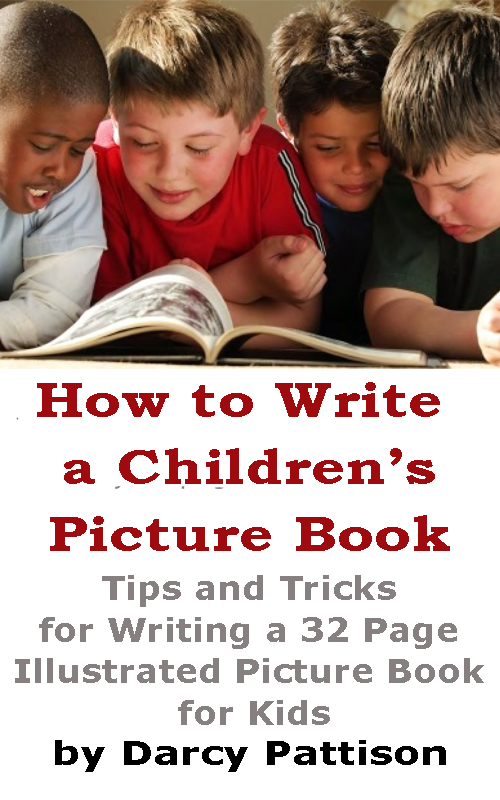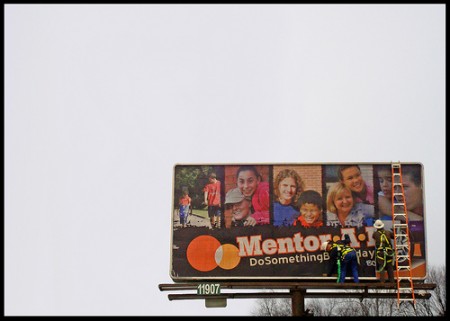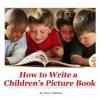Yesterday, today and tomorrow, we are focusing on point of view in your story or novel. Your writing tasks for the next 2 days for your “750 words each day in January” is to practice POV.
Today, we’ll focus on 1st person point of view.
1st person POV
 When the camera resides inside one character’s head and we hear that character speaking it is 1st person: the pronouns used are I, me, my. This POV is great for character novels where the inner life, the emotions, the personality are up front and center.
When the camera resides inside one character’s head and we hear that character speaking it is 1st person: the pronouns used are I, me, my. This POV is great for character novels where the inner life, the emotions, the personality are up front and center.
Coach scribbled something on his clipboard and I leaned over to see that he was scratching out Jimmy’s name and writing Dave instead. No! He couldn’t sub in Dave, he was lousy at passing. I glanced up at the stands, where Jimmy’s mom waved around a huge video camera. Where she had borrowed it, who knows? She just said, it was Jimmy’s big game, his big break, she had to get it on film. I rubbed my temple. Headache still nagging. That red pill Jimmy gave me, would it help? Or would it send me loopy?
Remember: Generally, you must stay in ONE POV choice at a time, not switch. You’ll probably find exceptions to the rule, but it’s a good rule for most situations. If you want to switch within a story, you would switch when you start a new chapter.
Go! Think Like a Writer in first person POV.
 | |
NEW EBOOK
Available on
|
For more info, see
writeapicturebook.com

For the recent discussion on focal length of your scene, I accidentally confused a reader. I wrote:
A scan is a way to show a crowd scene economically, yet in an interesting way. It involves a series of small zooms: the quarterback’s mother is taping the game with a new video camera that she borrowed money to buy; the coach’s pencil is hovering over two names, trying to decide if he’ll start the injured quarterback or his backup; the head cheerleader is trying to shake off a headache and wondering if that red pill the quarterback gave her would help or not. In a short paragraph, you get the complexities of the crowd!
READER wrote in to ask about point of view, or POV. When we dip into each person’s head this way, it is omniscient POV. Of course, you can do scans in any point of view, so that’s not the problem. Instead, READER wanted a clearer explanation of POV.
So, your writing tasks for the next 3 days for your 750 words is to practice POV. I’ll explain them here and then ask you to take a day for each POV. Even if you know this, it’s still good to go back and practice Thinking Like a Writer.
When you think about POV, you could ask a simple question: where is the camera?
Omniscient POV.
 For the omniscient POV, the camera is overhead, looking at things from an overall perspective and it’s an all-knowing camera. It knows what every character is thinking and can dip in and out of any perspective at any point. The SCAN that I wrote above is omniscient.
For the omniscient POV, the camera is overhead, looking at things from an overall perspective and it’s an all-knowing camera. It knows what every character is thinking and can dip in and out of any perspective at any point. The SCAN that I wrote above is omniscient.
1st person POV
When the camera resides inside one character’s head and we hear that character speaking it is 1st person: the pronouns used are I, me, my. This POV is great for character novels where the inner life, the emotions, the personality are up front and center.
Coach scribbled something on his clipboard and I leaned over to see that he was scratching out Jimmy’s name and writing Dave instead. No! He couldn’t sub in Dave, he was lousy at passing. I glanced up at the stands, where Jimmy’s mom waved around a huge video camera. Where she had borrowed it, who knows? She just said, it was Jimmy’s big game, his big break, she had to get it on film. I rubbed my temple. Headache still nagging. That red pill Jimmy gave me, would it help? Or would it send me loopy?
3rd person POV
A 3rd person POV pulls back from the position inside the character’s head to be right beside the character. You see what s/he sees, hear what s/he sees, know the thoughts of the character. But the pronouns are he or she.
Coach scribbled something on his clipboard and she leaned over to see that he was scratching out Jimmy’s name and writing Dave instead. No! He couldn’t sub in Dave, he was lousy at passing. Mary glanced up at the stands, where Jimmy’s mom waved around a video camera. Where had she borrowed it, Mary had no idea. His mom just said, it was Jimmy’s big game, his big break and she had to get it on film. Mary rubbed her temple, the headache still nagging. She wondered about the red pill Jimmy had given her, would it help ease the headache? Or would it make her loopy.
The differences are subtle, but important between 3rd and 1st. 3rd person POV is t
 Are there limitations in writing in the Third Person Omniscient point of view? After all the author is “God” and has full reign over the story! Could there possibly be any reason not to use this point of view? Of course, every point-of-view choice comes with its advantages and disadvantages, omniscient does as well. I published a post earlier about the advantages of using the third person omniscient POV, so lets look at look now at some of its limitations:
Are there limitations in writing in the Third Person Omniscient point of view? After all the author is “God” and has full reign over the story! Could there possibly be any reason not to use this point of view? Of course, every point-of-view choice comes with its advantages and disadvantages, omniscient does as well. I published a post earlier about the advantages of using the third person omniscient POV, so lets look at look now at some of its limitations:
Issues One Might Run Into Using Third Person Omniscient POV:
1) Transitions: When the author has free reign over their whole world they have a lot of information at their disposal. It can become tricky to decide when to show action and when to transition into the mind of a character (and which character’s mind for that matter). In What’s Your Story by Marion Dane Bauer, she states that “often, writers learning to use third person have trouble moving inside the main character to reveal thoughts and feelings. More stories fail because the writer’s don’t get inside their main character than for any other reason.”
 2) Moral Heavy-Handedness: When a writer opts to use a God-like perspective in a novel, they may start to offer God-like judgement for their characters. Beware! Too much “narrative” judgement can turn off a reader and cause them to feel like they’re being preached to.
2) Moral Heavy-Handedness: When a writer opts to use a God-like perspective in a novel, they may start to offer God-like judgement for their characters. Beware! Too much “narrative” judgement can turn off a reader and cause them to feel like they’re being preached to.
3) Who’s Story is This? With the ability to pop in and out of multiple character’s thoughts and feelings it may be hard for the reader to know who the protagonist of the story is. Perhaps that’s the point, maybe one is writing an ensemble piece. But be aware that it may take extra care to let the reader know who’s side (if any) they should be on.
4) Distance: The omniscient POV can often be the most distant from the reader. First person offers intimacy, where third omniscient creates a distance. A skillful writer can still get inside a character’s head and offer emotions and feelings, but some writers find this difficult (this relates back to the first limitation of transitions). Distance can also be created through the omniscient voice as well as the narrator voice that tells the story.
What limitations have you found while using the Omniscient POV? What about as a reader? Do you prefer this POV or do you like one that’s closer? Why?



 3 Comments on Limitations of Writing in the Omniscient POV, last added: 4/15/2011
3 Comments on Limitations of Writing in the Omniscient POV, last added: 4/15/2011
 When the camera resides inside one character’s head and we hear that character speaking it is 1st person: the pronouns used are I, me, my. This POV is great for character novels where the inner life, the emotions, the personality are up front and center.
When the camera resides inside one character’s head and we hear that character speaking it is 1st person: the pronouns used are I, me, my. This POV is great for character novels where the inner life, the emotions, the personality are up front and center. 











 How to Write a Picture Book
How to Write a Picture Book

I started in omniscent, then switched to 3rd person limited, though I don’t like that term if you’re switching between POVs. I think it’s better to decribe it as 3rd person personal. I didn’t want to give up the multiple POV’s so I cut them down to three characters and stuck with one main one.
Reason why – I didn’t want the limitations you mentioned above and some people hate the ‘head hopping’ in omniscent, as a new writer, I didn’t want to risk presenting a potential publisher with their pet hate.
The tricky bit in 3rd person limited was making the POV changes flow. I made one main POV and one occasional with anything from around 4 paragraphs to 4 pages and another who is in a different time and place. I separated them with a blank space. It works now and is much more personal.
“What limitations have you found while using the Omniscient POV?”
I think the most distressing is this limitation:
“Thank you for your interest in (redacted) Publishing. Our acquisitions committee has thoroughly reviewed your story. At this time we cannot offer you a contract because (redacted) Publishing does not accept submissions in the Omniscient Voice (ie. head hopping). If you would like to revise your work, we would be more than happy to revisit this work.”
I chose the Omniscient POV for the very reason that my epic fantasy really need the narrator to step back–to allow the reader sweeping inclusion into the story. There are so many characters and so much to tell in do few pages, any other point of view would become too tedious. Also, the story was purposely built with a movie in mind. Movies allow viewers omniscience not available in non-visual mediums.
Let me try that again without the misspellings:
I chose the Omniscient POV for the very reason that my epic fantasy really needed the narrator to step back––to allow the reader a sweeping inclusion into the story.
There are so many characters and so much to tell and do in so few pages, any other point of view would have become too tedious.
Also, the story was purposely built with a movie in mind. Movies allow viewers omniscience not available in non-visual mediums.